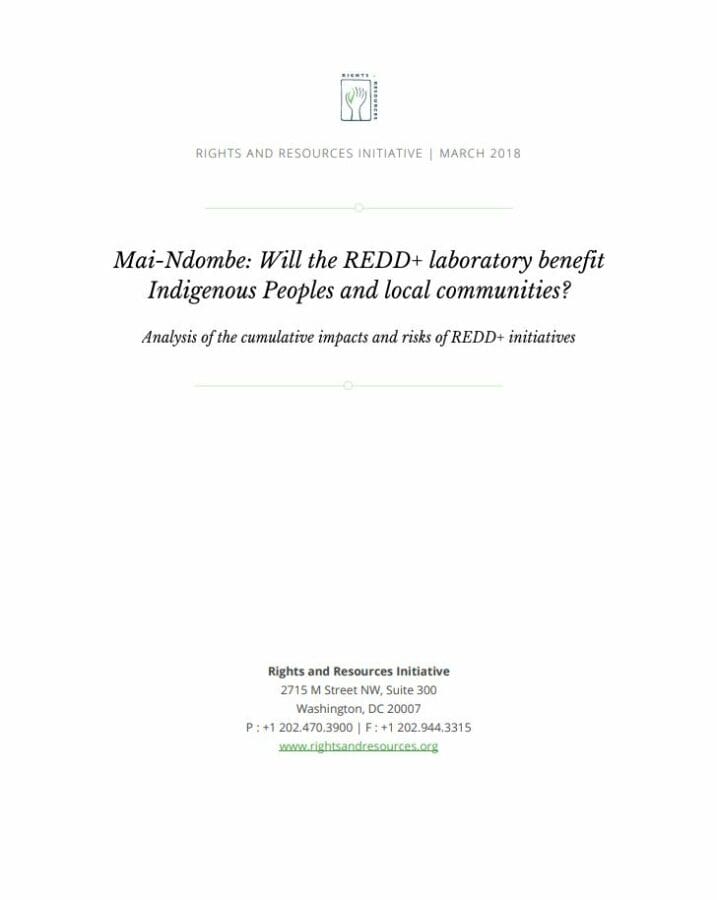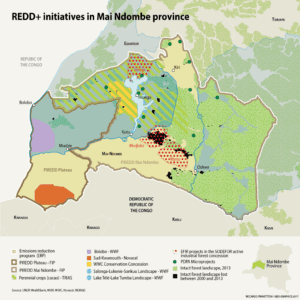Date: March 14, 2018
This study aims to assess the cumulative risks and impacts of all REDD+ initiatives in Mai-Ndombe on the rights and subsistence of local communities and Indigenous Peoples, using existing tools while taking into account gray areas of the REDD+ process. Findings come from existing project documentation, field studies conducted in recent years, and a series of interviews with REDD+ stakeholders in Mai-Ndombe. The study provides a mapping of all existing and planned REDD+ initiatives in the province, as well as a cross-cutting contextual analysis of risks which connects REDD+ to human rights. This is followed by an assessment of these initiatives’ cumulative impacts as well as of national and project strategies to address and reduce risks. It thus offers a perspective on the link between the accumulation of REDD+ initiatives and conflicts at different scales.
https://doi.org/10.53892/GAXF9733


